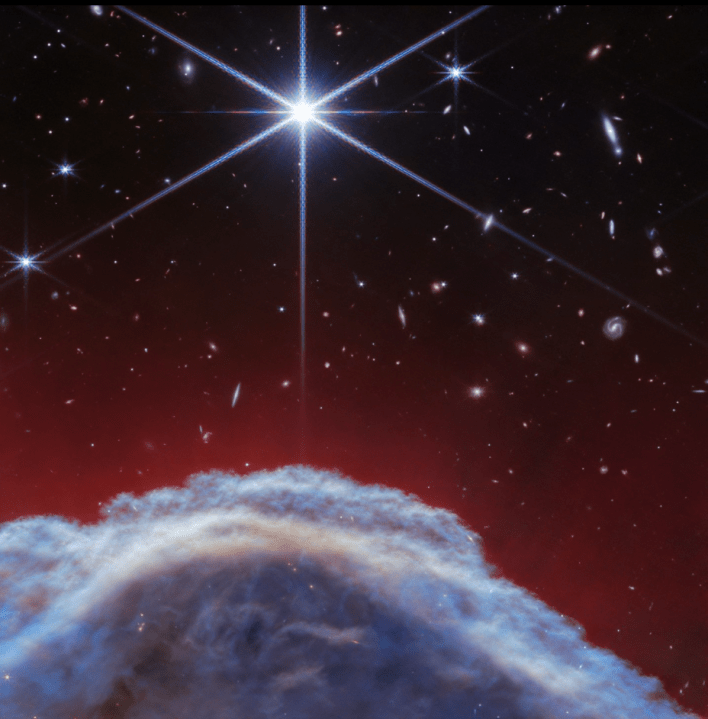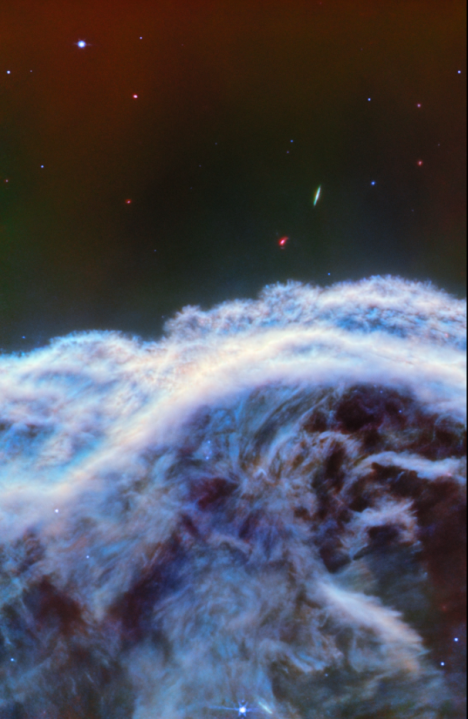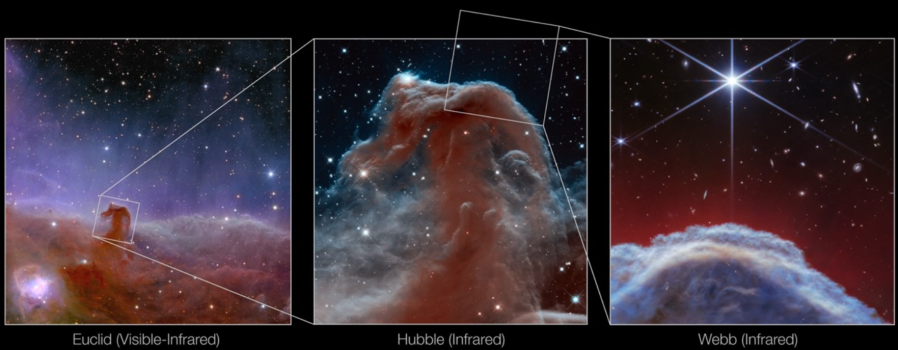NASA’s Webb Telescope captures sharpest ever images of Horsehead Nebula

SAN DIEGO (FOX 5/KUSI) — NASA has released the newest and best images to date from the James Webb Space Telescope of one of the most distinctive objects in our skies — the Horsehead Nebula.
NASA’s Jet Propulsion Laboratory (JPL) released images Monday morning in what the agency calls the sharpest infrared images to date of a zoomed-in portion of the iconic nebula that is located in the constellation Orion.
NASA images show how big Death Valley’s ‘rare’ lake got this winter
The Horsehead Nebula is famously known for looking like a horse’s head.
NASA says these new images show the top of the “horse’s mane,” or edge of the nebula, in a whole new light, capturing its complexity with unprecedented spatial resolution.
The Horsehead Nebula, also known as Barnard 33, is around 1,300 light-years away in the western side of a dense region known as the Orion B molecular cloud, according to NASA. It formed from a collapsing interstellar cloud of material, and is illuminated by a nearby hot star.
NASA streams first-ever high-definition video from deep space
A nebula is a giant cloud of dust and gas in space — some come from a supernova, others are regions where new stars are beginning to form.
Webb’s new images focus on the illuminated edge of the top of the nebula’s distinctive dust and gas structure.
Because of Webb’s MIRI and NIRCam instruments, an international team of astronomers was able to reveal for the first time the small-scale structures of the illuminated edge of the Horsehead Nebula.
NASA launches revolutionary PACE satellite to study Earth’s oceans, changing climate
The new images have also allowed astronomers to study how the dust from the nebula blocks and emits light, along with studying the spectroscopic data to learn more about the evolution of the physical and chemical properties of the material observed across the nebula.
The findings were published Monday in Astronomy & Astrophysics.
Astronomers say the Horsehead Nebula is considered one of the best regions in the sky to study how radiation interacts with interstellar matter, however it is estimated that the nebula will disintegrate in about 5 million years.
NASA scientists find evidence of ‘key ingredient for life’ on one of Saturn’s moons
The James Webb Space Telescope was launched on Dec. 25, 2021, and studies every phase in the history of our Universe — the first glows after the Big Bang, the formation of solar systems capable of supporting life on planets like Earth, and the evolution of our own Solar System.
Webb orbits the Sun unlike its predecessor the Hubble Space Telescope which orbits the Earth.
Webb is an international program led by NASA with its partners, ESA (European Space Agency) and the Canadian Space Agency.
For the latest news, weather, sports, and streaming video, head to FOX 5 San Diego & KUSI News.




